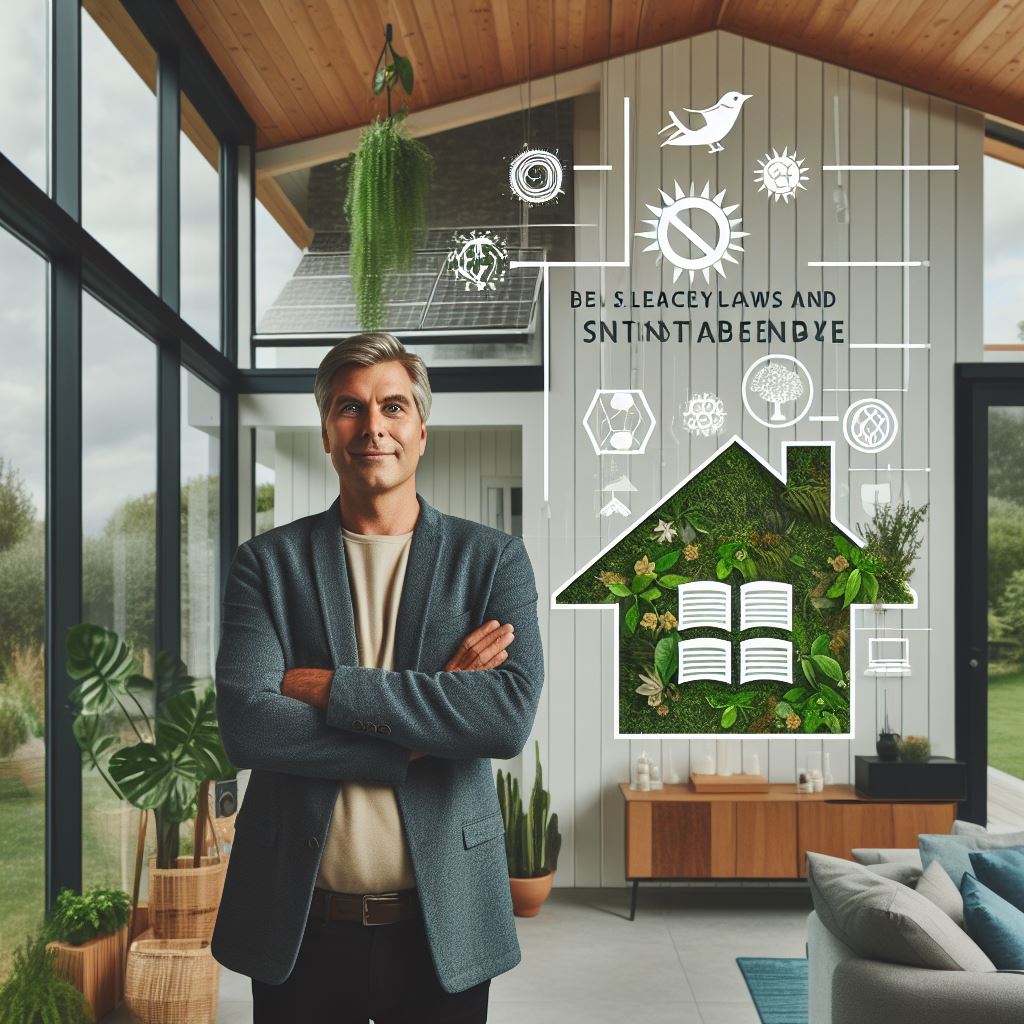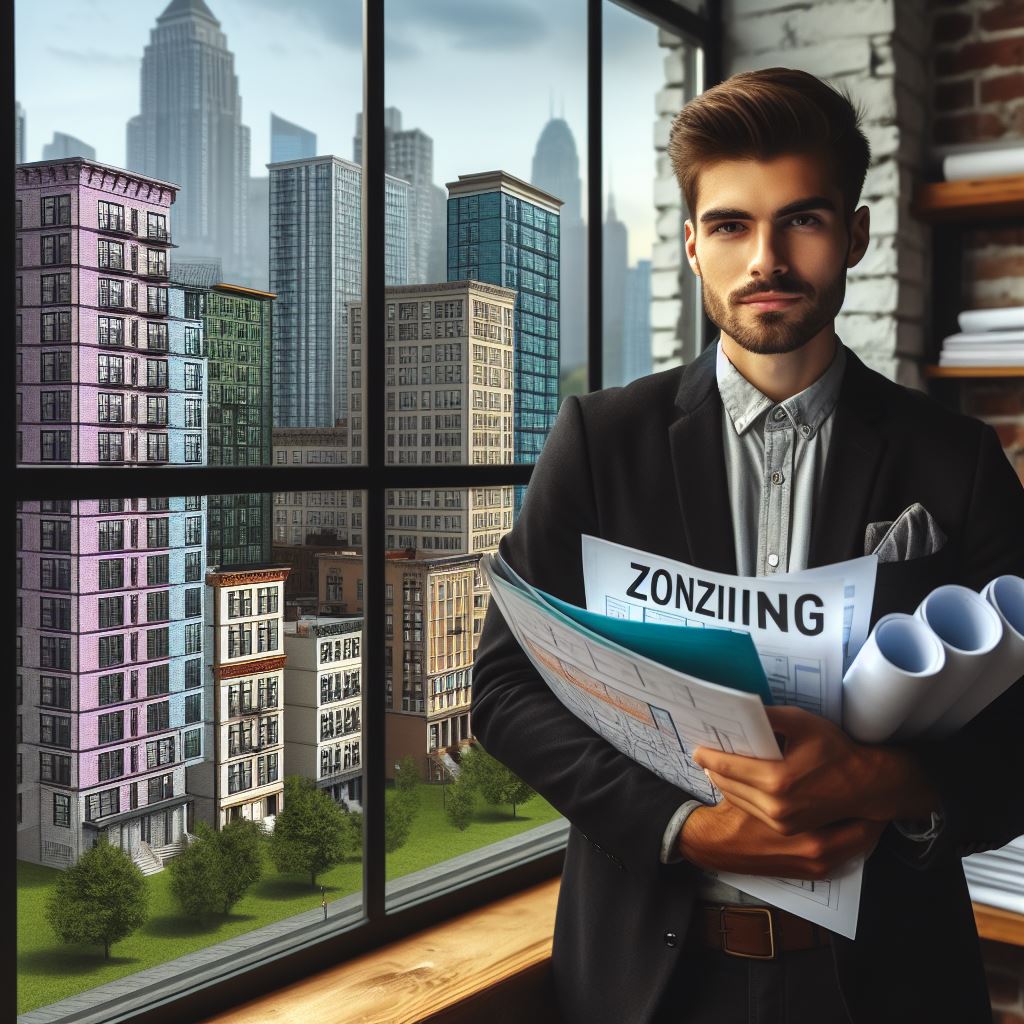Introduction
Eco-friendly building is crucial in reducing environmental impact and promoting sustainability.
It involves designing, constructing, and operating buildings that maximize energy efficiency, minimize waste, and use renewable materials.
Laws and incentives play a vital role in encouraging the adoption of eco-friendly building practices.
Government regulations set standards for energy efficiency, water conservation, and waste management in buildings.
Incentives, such as tax credits or grants, provide financial benefits for developers and homeowners who invest in eco-friendly building practices.
By implementing strict building codes and regulations, governments can ensure that new constructions meet certain sustainability criteria.
These laws may include requirements for using energy-efficient materials, installing renewable energy systems, and implementing water-saving technologies.
Additionally, incentives are effective in promoting eco-friendly building.
Governments often provide financial incentives to encourage developers and homeowners to adopt sustainable practices in their construction projects.
These incentives can include tax breaks, reduced permit fees, or grants that offset the costs of incorporating green features.
Through the implementation of laws and incentives, governments can effectively promote eco-friendly building practices.
This not only helps combat climate change and protects the environment but also stimulates the economy by creating green jobs and reducing energy costs for individuals and businesses.
In fact, eco-friendly building is crucial for a sustainable future, and laws and incentives play a pivotal role in promoting its adoption.
Governments must continue to prioritize and enforce regulations while providing attractive incentives to encourage the construction industry and individuals to embrace environmentally friendly building practices.
Overview of eco-friendly building laws
The primary goals of eco-friendly building laws revolve around protecting the environment, reducing greenhouse gas emissions, and promoting energy efficiency and sustainability.
Laws that mandate certain eco-friendly building practices
At the federal level, laws such as the U.S. Green Building Council’s Leadership in Energy and Environmental Design (LEED) certification program, provide guidelines for sustainable construction practices.
LEED certification is recognized nationwide and encourages the use of renewable materials, efficient energy systems, and water conservation measures.
State governments also play a crucial role in promoting eco-friendly building practices.
For instance, California’s CalGreen Building Standards Code sets mandatory green building regulations for both residential and non-residential projects throughout the state.
These requirements focus on reducing water consumption, promoting recycling, and enhancing energy efficiency.
At the local level, cities and municipalities often adopt eco-friendly building codes and ordinances tailored to their specific needs.
For example, Seattle’s Living Building Pilot Program encourages the construction of buildings that generate their own energy, harvest rainwater, and use non-toxic materials.
These local initiatives align with broader sustainability goals and address individual community concerns.
The objectives of these laws
The objectives of eco-friendly building laws are rooted in environmental protection and conservation.
By mandating sustainable practices, these laws aim to minimize the negative impact of construction on natural ecosystems, reduce habitat destruction, and preserve biodiversity.
Furthermore, these laws seek to address the pressing issue of greenhouse gas emissions.
Buildings are significant contributors to carbon dioxide emissions, so eco-friendly building laws prioritize the reduction of emissions through improved energy efficiency, the use of renewable energy sources, and implementing green building materials and techniques.
Energy efficiency and sustainability are additional key objectives of eco-friendly building laws.
These laws strive to ensure that buildings are designed, constructed, and operated in a manner that optimizes resource consumption and minimizes waste.
By encouraging the adoption of energy-efficient technologies and promoting sustainable practices, these laws contribute to a greener, more sustainable future.
In short, eco-friendly building laws exist at various governmental levels and aim to promote sustainable construction practices.
These laws emphasize environmental protection, reducing greenhouse gas emissions, and enhancing energy efficiency and sustainability.
By complying with these regulations, builders and developers can contribute to a more eco-conscious and sustainable built environment.
Read: Navigating Zoning in Coastal Areas
Key components of eco-friendly building laws
Eco-friendly building laws are essential to promote sustainable development, reduce environmental impact, and create healthier communities.
These laws typically consist of various components that address different aspects of eco-friendly construction practices.
In this section, we will explore the key components of eco-friendly building laws.
Energy efficiency requirements
Energy efficiency requirements play a crucial role in eco-friendly building laws.
These requirements encourage the use of renewable energy sources, such as solar or wind power, to reduce reliance on fossil fuel-based energy.
Additionally, these laws establish minimum energy performance standards for buildings to ensure they operate efficiently and minimize energy waste.
Water conservation measures
Water conservation measures are another important component of eco-friendly building laws.
These measures aim to reduce water consumption and promote responsible water usage.
They often include requirements for low-flow fixtures, such as toilets and faucets, as well as efficient irrigation systems to minimize water wastage in landscaping.
Furthermore, eco-friendly building laws may encourage rainwater harvesting and graywater reuse, allowing for the collection and reuse of water for non-potable purposes like flushing toilets or watering plants.
Waste management and recycling regulations
Waste management and recycling regulations are integral to eco-friendly building practices.
These regulations prioritize proper disposal of construction and demolition waste, such as concrete, wood, and metal, to minimize environmental impact.
They often mandate recycling and encourage the use of recycled or sustainable materials in construction projects.
By promoting recycling and reducing waste, these laws contribute to a more sustainable building industry.
By implementing eco-friendly building laws, governments can create a framework that promotes environmentally responsible construction practices.
These laws not only benefit the environment but also offer economic incentives for builders and developers.
Incentives for utilizing recycled or sustainable materials, for example, can reduce construction costs and help create a market for eco-friendly products.
Additionally, tax incentives or grants may be provided to individuals or businesses that invest in renewable energy systems or water-saving technologies.
In essence, eco-friendly building laws encompass various key components that regulate energy efficiency, water conservation, and waste management.
These laws play a crucial role in promoting sustainable development and reducing the environmental impact of the construction industry.
By adhering to these regulations, builders and developers can contribute to a greener future while also benefiting from economic incentives.
Read: Real Estate Compliance: The Clean Air Act

Incentives for eco-friendly building
Tax incentives and grants
One of the key ways that governments encourage eco-friendly building practices is through providing tax incentives and grants.
These financial incentives reward individuals and organizations for using sustainable technologies and practices in their building projects.
The federal government offers tax credits for incorporating green building technologies, such as solar panels or energy-efficient appliances, into new constructions or renovations.
These tax credits can significantly reduce the overall cost of a project while promoting the use of environmentally friendly technologies.
In addition to federal tax credits, state and local governments also provide grants for sustainable building projects.
These grants aim to support the use of energy-saving materials and techniques, encouraging developers to prioritize eco-friendly solutions.
Expedited permit processing and fee reductions
Another way governments promote eco-friendly building is by offering expedited permit processing and fee reductions.
They simplify the bureaucratic procedures associated with obtaining building permits, making it easier and more cost-effective for developers to implement sustainable design and construction practices.
By providing incentives such as expedited permit processing, governments encourage developers to adopt eco-friendly practices, recognizing the time and cost savings associated with these practices.
Additionally, fee reductions can help offset the higher initial costs of sustainable materials and technologies, making them more accessible for developers.
Furthermore, governments streamline regulatory processes for green building projects, enabling quicker approvals and reducing administrative burdens.
This approach eliminates unnecessary administrative obstacles, making it easier for developers to undertake environmentally friendly projects.
Certification programs and recognition
Certification programs and recognition play a crucial role in promoting and incentivizing eco-friendly building practices.
These programs provide a framework for assessing and validating the sustainability initiatives undertaken in building projects.
One of the most widely recognized certification programs in green building is LEED (Leadership in Energy and Environmental Design). LEED certification evaluates the overall environmental performance of buildings, giving recognition to those that meet specific sustainability criteria.
Building projects with LEED certification often enjoy a range of benefits, such as higher property values, energy savings, and improved occupant health and well-being.
Additionally, governments and industry organizations acknowledge and reward eco-friendly building projects through various recognition programs and awards.
These accolades provide public validation for sustainable initiatives, encouraging developers to prioritize eco-friendly practices in their projects.
In a nutshell, a comprehensive set of incentives encourages eco-friendly building practices.
Tax incentives and grants reduce financial barriers, expedited permit processing and fee reductions simplify administrative procedures, and certification programs and recognition validate and promote sustainability efforts.
By combining these incentives, governments create a conducive environment for the growth of eco-friendly building.
Read: Land Use Planning and Community Zoning
Challenges and Limitations
Costs associated with eco-friendly building
Eco-friendly building practices often require a higher initial investment compared to conventional construction methods.
While this can deter some developers, it is important to consider the long-term cost savings that come with eco-friendly buildings.
Although the upfront expenses may be higher, the energy-efficient features and sustainable materials used in these constructions result in reduced operational costs over the life cycle of the building.
Therefore, the higher initial investment is justified by the long-term cost savings that eco-friendly buildings offer.
Regulatory complexities and inconsistencies
One of the major challenges in promoting eco-friendly building practices is the lack of uniformity in regulations across different regions and jurisdictions.
Sustainable building codes and standards can vary significantly, making it difficult for developers to navigate the legal landscape.
This lack of consistency not only leads to confusion but also creates additional complexities and delays in the approval process.
Additionally, compliance with these regulations can be challenging due to the need for specialized knowledge and expertise.
Developers may face administrative hurdles and encounter difficulties in obtaining permits and approvals for their eco-friendly building projects.
This adds to the overall complexity of the process and can discourage individuals and companies from adopting eco-friendly building practices.
All in all, while eco-friendly building practices offer numerous benefits, they are not without challenges and limitations.
The costs associated with eco-friendly construction can discourage some developers, but it is crucial to consider the long-term cost savings.
Moreover, the lack of uniformity in regulations and compliance issues can pose significant obstacles that need to be addressed to encourage widespread adoption of eco-friendly building practices.
Eco-friendly building laws and incentives play a crucial role in promoting sustainable construction practices.
These policies encourage the use of renewable materials, energy-efficient designs, and waste reduction.
They also help mitigate the environmental impact of buildings by reducing carbon emissions and conserving natural resources.
By adhering to these regulations, developers, homeowners, and policymakers contribute to a greener and healthier future.
Call to action for developers, homeowners, and policymakers to support and promote eco-friendly building practices It is essential for developers to prioritize eco-friendly building practices.
By incorporating renewable materials and energy-efficient technologies, they can create more sustainable and cost-effective structures.
Homeowners should also embrace environmentally conscious choices by investing in energy-saving appliances and implementing green building strategies.
Policymakers have a crucial role to play in enacting and enforcing eco-friendly building laws and incentives.
They must continue to advocate for sustainable construction practices and provide financial support to encourage their adoption.
Together, we can create a built environment that is in harmony with nature and supports a greener future for generations to come.
Read: EPA Rules Impact on Real Estate Explained
Conclusion
Eco-friendly building laws and incentives play a crucial role in promoting sustainable construction practices.
These policies encourage the use of renewable materials, energy-efficient designs, and waste reduction.
They also help mitigate the environmental impact of buildings by reducing carbon emissions and conserving natural resources.
By adhering to these regulations, developers, homeowners, and policymakers contribute to a greener and healthier future.
It is essential for developers to prioritize eco-friendly building practices.
By incorporating renewable materials and energy-efficient technologies, they can create more sustainable and cost-effective structures.
Homeowners should also embrace environmentally conscious choices by investing in energy-saving appliances and implementing green building strategies.
Policymakers have a crucial role to play in enacting and enforcing eco-friendly building laws and incentives.
They must continue to advocate for sustainable construction practices and provide financial support to encourage their adoption.
Together, we can create a built environment that is in harmony with nature and supports a greener future for generations to come.




